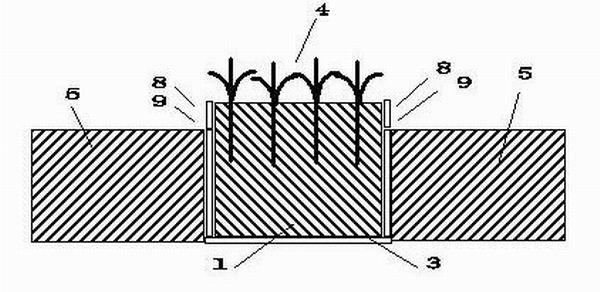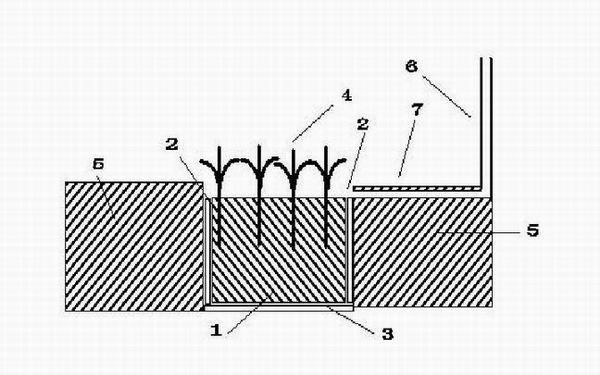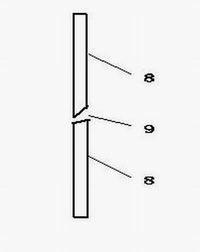Rain collecting project
An engineering and rain collection technology, which is applied in general water supply conservation, drinking water installations, climate change adaptation, etc., can solve problems such as stagnant water backflow, vehicles and pedestrians unable to walk, and limited sewer capacity
- Summary
- Abstract
- Description
- Claims
- Application Information
AI Technical Summary
Problems solved by technology
Method used
Image
Examples
no. 1 example
[0015] The first embodiment: combined with figure 1 to explain. Make a transformation of the green belt, dig the green belt down to a depth of several meters, the depth can reach 3-5 meters, or even more than 10 meters deep, forming a pit (1), and laying bricks around the pit (2) and Smear cement, bottom (3) also smear cement, make pit (1) impermeable; Then backfill the excavated soil, plant flowers and trees (4).
[0016] Its characteristics: when it rains, the rain will be stored in the pit (1), because the surrounding (2) and the bottom (3) are protected by cement, and the water will not flow out of the pit (1). In this way, the accumulated water in the pit (1) can be used to supply the water required by the flowers, plants and trees (4), and the "urban heat island effect" can be alleviated through the evaporation of water.
no. 2 example
[0017] The second embodiment: an improvement on the basis of the first embodiment. combined with figure 2 to explain. Lay a pipe (7) on the ground to flow to the greening pit (1) with the existing downpipe (6) of the house, and when it rains, the rainwater flowing down through the downpipe (6) of the house will flow to the greening pit (1 )Inside.
[0018] Its characteristics: make full use of the rainwater flowing into the green belt pit (1) from the downpipe (6) of the house to supply the water required by the flowers, plants and trees (4), and keep sufficient water in the pit (1); at the same time, it can also It reduces the flow of rainwater from the house to the ground, increases the possibility that the accumulated water on the road is not easy to drain from the sewer, and the accumulated water pours into the house.
no. 3 example
[0019] The third embodiment: an improvement on the basis of the first embodiment. combined with image 3 to explain. Dig a pit (1) deeply with the green belt equally, but the edge (8) of this pit lays stone slabs or bricks, 0.5-1 meter higher than the road surface, and the height of the backfill is flush with the edge (8) of the pit; There are several small holes (9) on the ground at the edge, allowing the road surface (5) to communicate with the pit (1). Additionally, these small holes (9), combined with the attached Figure 4 to illustrate. The aperture on the road surface (5) is larger, 3-5 centimeters, and the aperture in the pit (1) is smaller, 1-2 centimeters; And, the small hole (9) is inclined, and the road surface (5) is higher, and the pit (1) Lower inside. Like this, can prevent the sewage in the rainwater from flowing into the pit (1), can prevent the soil in the pit (1) from flowing out again, flow to the road.
[0020] Its features: because there are severa...
PUM
 Login to View More
Login to View More Abstract
Description
Claims
Application Information
 Login to View More
Login to View More - R&D
- Intellectual Property
- Life Sciences
- Materials
- Tech Scout
- Unparalleled Data Quality
- Higher Quality Content
- 60% Fewer Hallucinations
Browse by: Latest US Patents, China's latest patents, Technical Efficacy Thesaurus, Application Domain, Technology Topic, Popular Technical Reports.
© 2025 PatSnap. All rights reserved.Legal|Privacy policy|Modern Slavery Act Transparency Statement|Sitemap|About US| Contact US: help@patsnap.com



